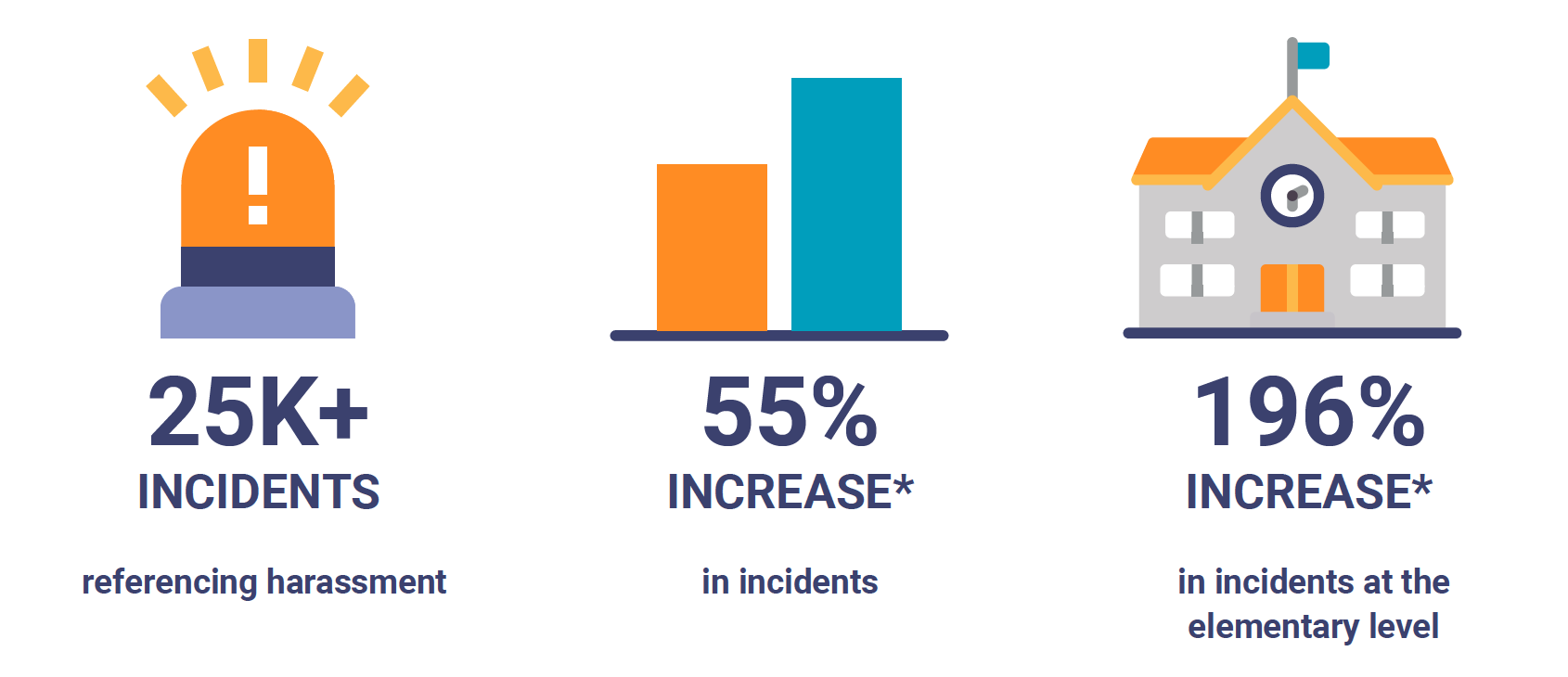At the close of the 2019–20 school year, we reported a decrease in incidents flagged for harassment during the early days of the pandemic. The data from the 2020–21 school year tells a different story; student safety incidents in this category—which includes incidents involving bullying and cyberbullying—increased by 55% this past school year, rising from 32 incidents to 50 incidents per 10,000 students. At the elementary level, incidents flagged for harassment grew by 196%, from nine incidents up to 26 incidents per 10,000 students.

Overall, Gaggle flagged more than 25,000 student safety incidents in this category during the 2020–21 school year. More than four in every 10 incidents (44%) in this category are flagged in students’ emails, and three in every four incidents (75%) occurred during the school day. Whether they were learning at home or in the classroom, students were participating in this behavior at an increasing rate this year—and overwhelmingly during the school day.
“Rather than being another source of stress and potential grievances, schools should be viewed as positive environments where youth thrive,” shared Bruno Dias, Director of Safety and Security at Mansfield Independent School District in Texas. “Still, Gaggle’s studies show that 75% of harassment incidents occurred during school hours, making detection and management of concerning behaviors a top priority.”
For some kids, it’s easier to write about being bullied than it is to talk to someone about it. That’s one of the many reasons why a digital safety net is such an important tool for educators. If you don’t know a student is struggling, it’s much more difficult to get them the help they need. By identifying issues with bullying and providing insight into students who are having a tough time, school leaders can be proactive in their approach to student safety and well-being.
“It’s not always a life-ending crisis situation, but it could head off a disturbing situation in the building—or cyberbullying. You can see girls talking to each other, communicating back and forth somehow online, and we can get that information and see kind of the ‘mean girl’ situation and try to head that off—especially in the middle school level.”
Leigh Anne Rainey, Chief Academic Officer, Collierville Schools (TN)
To learn more about what Gaggle’s data revealed across all of our content categories during the 2020–21 school year, read our Through the Gaggle Lens: The State of Student Safety report.
*Increases reflect incident rates per 10,000 students compared to the 2019–20 school year, accounting for growth in Gaggle’s business.



Let Us Know What You Thought About This Post.
Put your comment below.